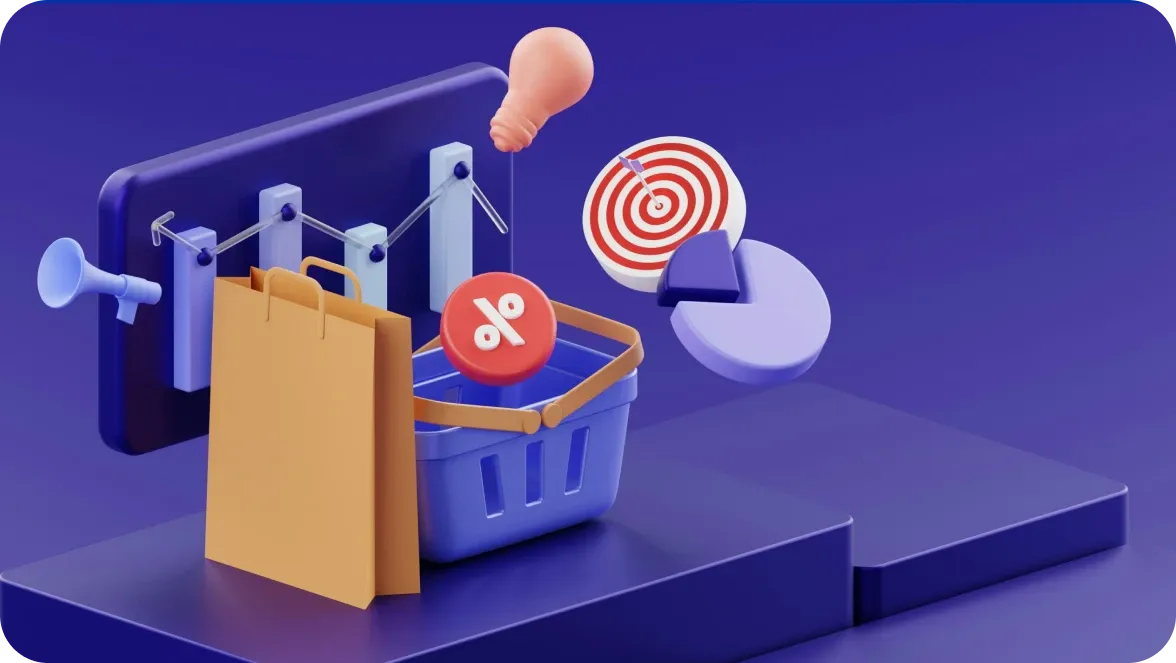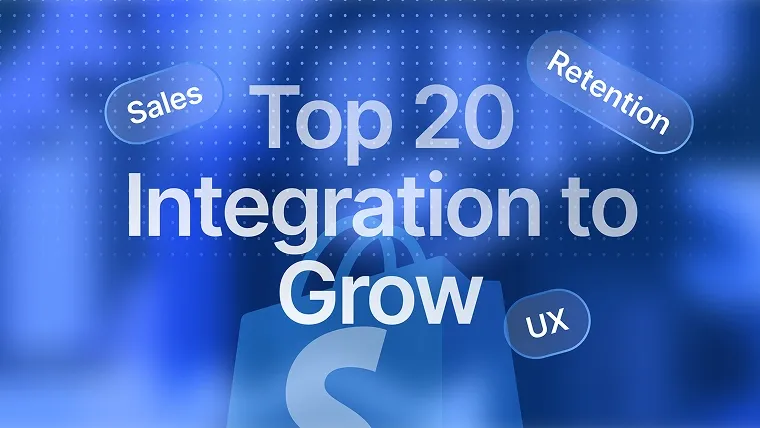
For emerging ecommerce brands and traditional stores moving online, shipping and fulfillment can be tough. Today, to give global customers a satisfying shopping experience is essential for thriving in a competitive market. Fortunately, ecommerce platform features have made international sales accessible to many retailers. Online stores can operate 24/7 and be easily accessible from anywhere.
Platforms like Shopify support localization, allowing websites to adapt their language, product catalogs, and currencies to meet the needs of different regions. Shopify continues to innovate and simplify the ecommerce process, aiming to streamline the selling process, order delivery, and ensure smooth transactions.
Check out what’s new on Shopify in September’24 to help you seamlessly manage localization, shipping, duties, and compliance for your online store.
Flow: Utilize data from the send Admin API request action
Shopify has enhanced the Send Admin API request action to return data. After selecting a mutation and specifying the input and output data, you can use any returned information in subsequent workflow steps.
This update simplifies creating and updating orders, subscriptions, products, customers, and inventory, opening up new ways to automate tasks. You can discover more feedback in the Shopify community.
New "Don't Collect Tax" option for B2B
Shopify has made it easier to handle tax exemptions for B2B businesses! Now, you can use a "Don't collect tax" option at the company location level. What does it mean? There is no longer a need to use complicated workarounds, like changing business customers to checkout-to-draft or making duplicate products for those who are tax-exempt.
UI update: Company and location details
The Shopify team changed the layout of the Company and Company Location detail pages to make it easier to find and understand important information. Now, customizations are clearly separated from standard information, so you can identify and manage them more quickly. They’ve also made it easier to manage catalogs for Company locations.
New staff permissions for Gift Cards
Before, there was just one Gift Cards permission that allowed staff to do many things, like create, edit, export, and deactivate gift cards. Now, there are four new permissions for Gift Cards: View, Create and Edit, Export, and Deactivate. This mostly gives merchants the power to control what actions staff can take with gift cards.
All existing staff members with the old Gift Cards permission will automatically have all the new permissions selected by default, so nothing changes for them. Merchants can choose to enable or disable some of these new permissions if they need more specific control. Visit the Shopify Help Center for the details.
Shopify bundles now available on POS
You can now sell bundles created with the Shopify Bundles app on Shopify POS!
What’s new? Shopify Bundles now work with Shopify POS! If you use the Shopify Bundles app, you can quickly publish your bundles to the POS sales channel.
Bundles are sets of two or more related products, usually offered at a discount. You can now sell these bundles via your Online Store, Shop channel, and Shopify POS. Just make sure the Point of Sale is selected in the “publishing - sales channels” settings to get started.
Benefits of selling bundles: Selling bundles will boost your Average Order Value while providing customers with curated offers and discounts. Moreover, they assist in clearing out old inventory and increasing product visibility.
Fixed bundles: A set group of products.
Multipack bundles: Multiple identical items sold together.
Mix-and-match bundles: Customers can choose their items to create a bundle.
To create Fixed or Multipack bundles, use the Shopify Bundles app, which is free and available on all Shopify plans. For Mix-and-Match bundles, check out the Shopify App Store for third-party bundle apps that integrate seamlessly with Shopify admin and POS. Find more details in the Shopify Help Center.
Automate marketing and workflows when customers join or leave segments
You can now trigger marketing automations and workflows when customers join or leave segments. Simply set up customer segments in Shopify and automate actions based on their membership.
Two new marketing automation templates help you get started:
Welcome new VIPs: Automatically send an email to customers who join your VIP segment, thanking them and highlighting exclusive offers.
Send birthday emails: Celebrate customers’ birthdays with a special deal. This automation also adds a birthdate field for future use, and you can easily start collecting birthdays with Shopify Forms.
If you’re using the templates from the Marketing > Automations section, the necessary segments will be created automatically. You can customize them as needed. For workflows built in Flow, ensure your segments and metafields are set up correctly in the Customers section.
Learn more about segment triggers and marketing automations in Flow.
Enable Ship-to-Store fulfillment for better in-store pickup
Shopify has expanded its "Pickup in Store" feature to include "Ship-to-Store" fulfillment through the new Store Transfers feature. This allows customers to order products online and pick them up at a store location, even if the items aren’t currently in stock at that location.
Store transfers: Merchants can now offer in-store pickup for more products by transferring items from other retail locations or fulfillment centers. This extends the "Pickup in Store" option to a broader range of products. Merchants can configure transfers and exclude certain products if necessary.
What’s more? Merchants can easily manage inventory transfers for pickup orders directly from the Shopify admin.
Why are we excited? That means an improved checkout experience. Pickup locations are now better displayed at checkout, showing only relevant options within the buyer’s country. A streamlined, expandable list simplifies the selection process, improving the customer experience.
Semantic search now supports more languages
Shopify's Semantic Search now supports multiple languages, making it easier for shoppers worldwide to find what they need using everyday language. Customers can search in their preferred language, even with casual phrases like "something warm to wear in the winter" instead of specific terms like "fleece hat."
If you've already enabled Semantic Search in the Shopify Search & Discovery app, this update is live for you. If not, and you're on a Shopify plan or higher, you can enable it in the free app. Here are more details in the Shopify Help Center.
Flow: Faster and easier workflow troubleshooting
Shopify has dropped a host of new development updates in troubleshooting workflows, making it more efficient. Now, it's faster to see the status of a workflow run and locate errors.
The updated workflow run list has two improved columns: Workflow Status and Results. The Workflow Status column shows new states like In-progress, Completed, Timed out, Rate limited, and Cancelled. In the Results column, you'll see which actions were successful and which had errors. Clicking on any action takes you directly to its details.
The page now loads faster, even for workflows with many steps, reducing time-out errors and improving troubleshooting. For questions or feedback, visit the Shopify community.
Duty inclusive pricing now available for managed markets merchants
Merchants selling cross-border with Managed Markets and using one-page checkout can now enable duty-inclusive pricing. This ensures customers aren’t surprised by extra duty fees at checkout. You can choose to keep product prices the same or adjust them to cover the duty costs. Customers will see that duties are included in the total during checkout. For more details, visit the Shopify Help Center.
Improvements to shipping refunds
Shipping refunds are now better reflected in your order details and refund process:
Updated financial summary: The shipping amount in the financial summary now updates after a refund. For example, if $10 was charged for shipping and $6 is refunded, the summary will show $4 instead of the original $10. For orders with multiple shipping lines, refunds are proportionally distributed.
Easier refund process: A new checkbox makes refunding shipping simpler. It defaults to refunding the full amount, but you can still adjust it for partial refunds. If multiple shipping lines are involved, each is now shown separately, and any previously refunded amounts are clearly displayed.
Timeline events: Refunds for shipping now create timeline events on the order details page, even when only shipping is refunded.
Customer metafields on POS
Customer metafields that you pin in the Shopify admin are now visible in customer profiles on POS. This allows your retail staff to easily view and capture important customer information in a structured way. Now, you can quickly collect data such as birthdays, loyalty status, or any other details that are important to your business. Visit the Shopify Help Center for more information on Customer Metafields on POS.
Improved script writing with autocomplete and contextual details
Now, the Run code action in Flow offers a better experience with new features for writing scripts. You’ll find modern code editing tools, such as autocomplete and contextual details when you hover over elements.
Key features:
Dynamic suggestions: As you type in the main function of the script, the editor will suggest available values based on your input. This speeds up coding by providing suggestions for partially typed words and helps reduce errors.
Instant type information: Hovering over code elements gives you quick access to type information, clarifying what values are acceptable and further minimizing mistakes.
For more details on how these features work and any limitations, check the documentation. You can also get assistance from the Shopify community!
Storefront filters now support category metafields
Merchants who use Shopify’s Standard Product Taxonomy can now add category metafields as filters in their storefront using the Shopify Search & Discovery app.
This update allows filter swatches to automatically appear in the storefront filter dropdown, and filter values will be grouped under a single label. For instance, “powder blue” and “navy blue” will be combined under the “Blue” filter option. The full documentation is here.
YouTube shorts now supported as external file type
You can now upload YouTube Shorts to your products and other resources in Shopify! The file picker in the admin allows you to add a YouTube Shorts URL in the "add from URL" field. For more details, visit the Shopify Help Center!
POS terminal experience enhancements
The updated POS Terminal and the Customer View app (version 1.25) with a fresh design for the cart, payment, tipping, and receipt screens are available for you!
Idle screen animations: The default idle screen now features animations, supporting both light and dark modes for a more enjoyable experience.
Multiple digital receipt options: Customers can now choose from various digital receipt options, including the Shop app, email, SMS, and print, making it easier to receive their receipts.
Product images on customer displays: Customers can view product images on customer-facing devices, allowing them to see their items as they're added to the cart. You can manage this feature in the Display Editor (Settings > Devices > Customer displays) within the POS Sales Channel.
To access these features, make sure you’re using POS App version 9.19 and Customer View version 1.25. Check out the Shopify Help Center!
Tablet improvements for the POS app
In version 9.19, you may find the updated POS app layout for tablets to better use screen space, allowing retail staff to see more information at once.
Here’s what’s new:
Optimized text size and spacing: We’ve adjusted the text size and spacing, enabling staff to view more information on a single screen. This means less scrolling and fewer taps when building carts.
Windowed workflows: The changed workflows from a full-screen view to a windowed view on iOS tablets help staff focus on specific actions while keeping the cart visible.
Introducing files admin user permission
In the final section, we want to highlight a new feature that allows merchants to give staff members specific permissions to access files in their shop. This ensures that team members have the appropriate level of access based on their roles and needs. The file admin user permission is now available to all merchants. Check the Shopify Help Center for more details.
It's impressive that the platform continues to introduce so many improvements and changes to ensure the success of each Shopify merchant. If you need expert assistance from a trusted Shopify agency, the DigitalSuits team is here to help you. Contact us today and make the most of these enhancements!








































Was this helpful?
0
No comments yet